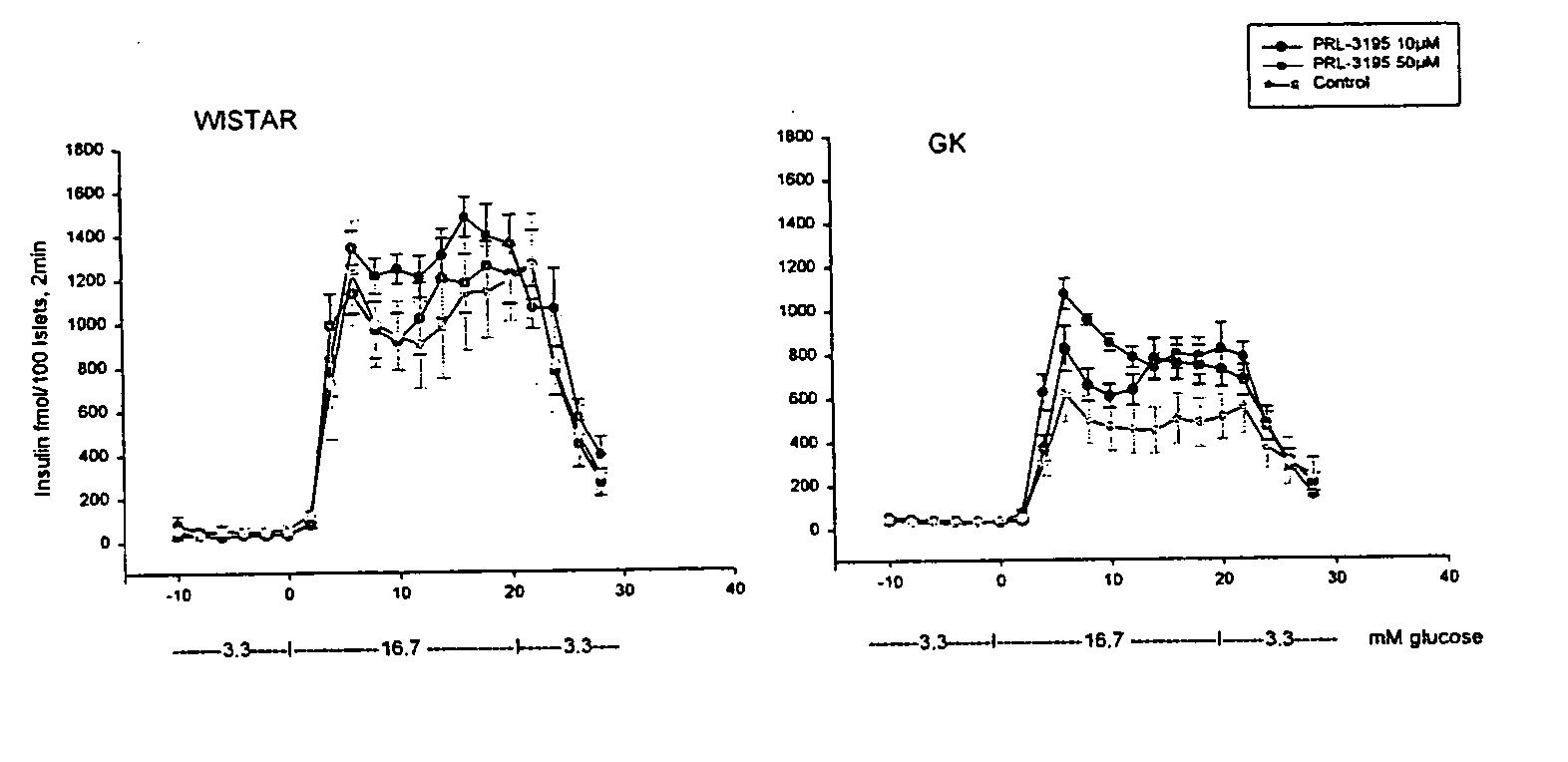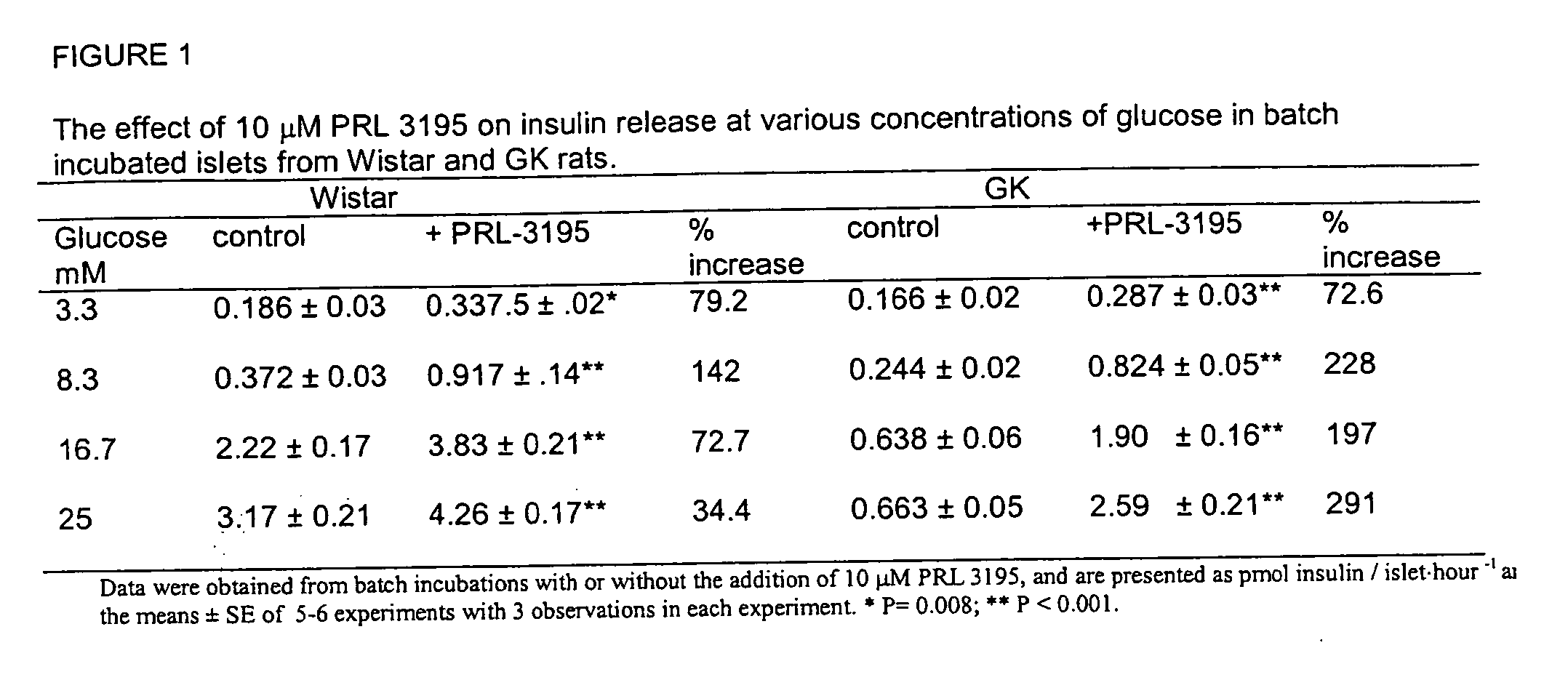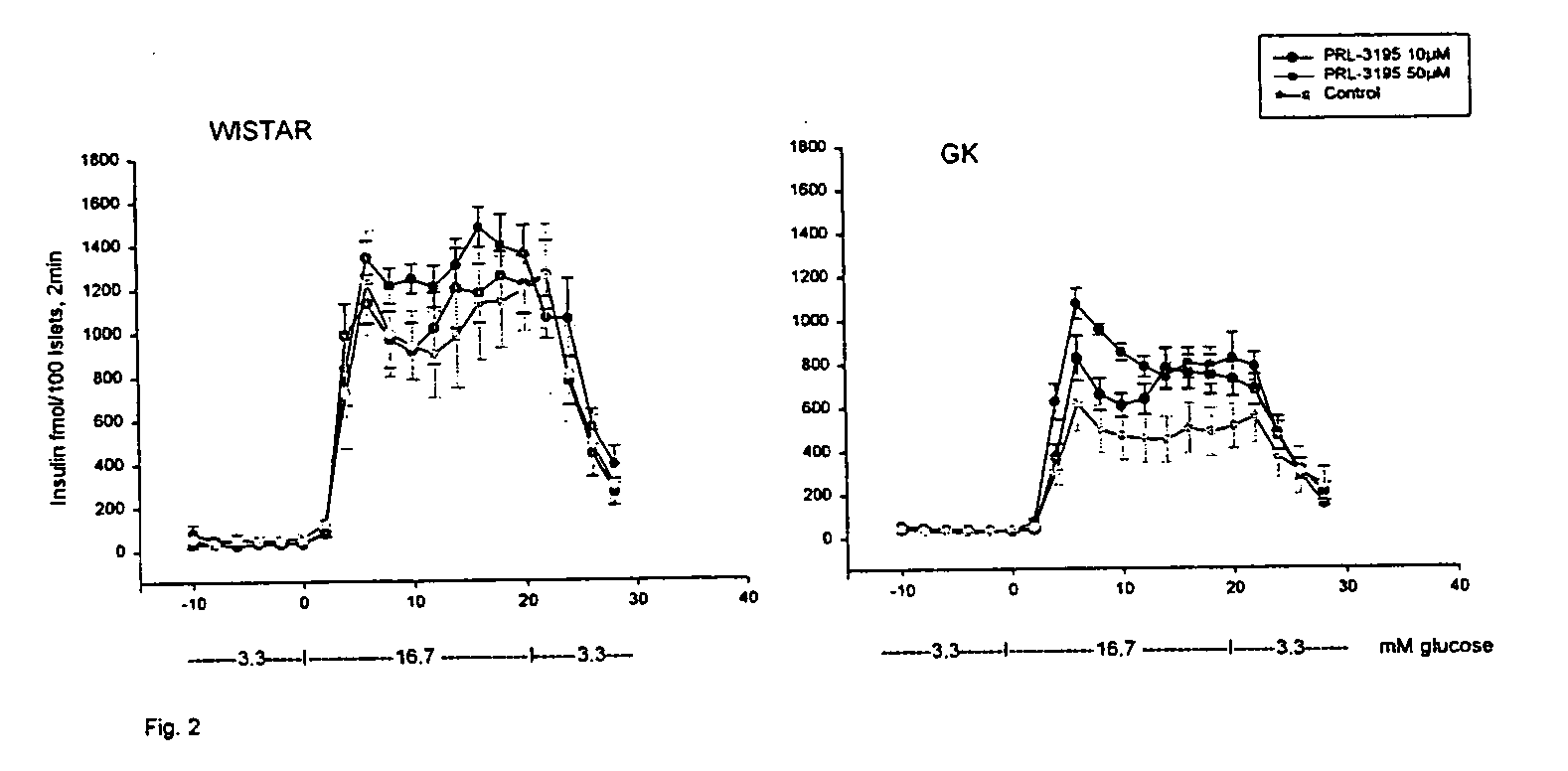Methods for identifying compounds for treating diabetes mellitus
a technology for diabetes mellitus and compounds, applied in the direction of disease diagnosis, carrier-bound/immobilised peptides, material testing goods, etc., can solve the problems of diabetes complications, insufficient insulin production, abnormal glucose level in the blood, etc., to promote insulin secretion, promote insulin release, and increase glucose levels
- Summary
- Abstract
- Description
- Claims
- Application Information
AI Technical Summary
Benefits of technology
Problems solved by technology
Method used
Image
Examples
examples
Animals
[0049] Male Wistar rats, aged 2-3 months, were obtained from B&K Universal (Sollentuna, Sweden). The animals were fed ad libitum with free access to water and placed in rooms with alternate 12 hour periods of light and darkness. GK rats came from Stockholm's colony which was established 1992
Isolation of Pancreatic Islets, Batch Incubation, and Perifusion Studies.
[0050] Islets were isolated by digestion with collagenase (Hoffmann-La Roche, Basel, Switzerland) and cultured for 20-22 h in RPMI-1640 medium supplemented with 11 mmol / l glucose and 10% (vol / vol) FCS. For both batch and perifusion studies, the islets were first preincubated for 35 min in Krebs-Ringer bicarbonate buffer (KRBB) containing 3.3 mmol / l glucose and 2 g / l bovine plasma albumin (Sigma, St. Louis, Mo.).
[0051] For batch incubations, batches of ten islets were then incubated for 1 h in 350 μl KRBB-albumin-glucose. As a stimulus for hormone release, 3.3 to 25 mM glucose or 20 mM arginine were used. PRL-319...
PUM
| Property | Measurement | Unit |
|---|---|---|
| flow rate | aaaaa | aaaaa |
| concentration | aaaaa | aaaaa |
| weight | aaaaa | aaaaa |
Abstract
Description
Claims
Application Information
 Login to View More
Login to View More - R&D
- Intellectual Property
- Life Sciences
- Materials
- Tech Scout
- Unparalleled Data Quality
- Higher Quality Content
- 60% Fewer Hallucinations
Browse by: Latest US Patents, China's latest patents, Technical Efficacy Thesaurus, Application Domain, Technology Topic, Popular Technical Reports.
© 2025 PatSnap. All rights reserved.Legal|Privacy policy|Modern Slavery Act Transparency Statement|Sitemap|About US| Contact US: help@patsnap.com



